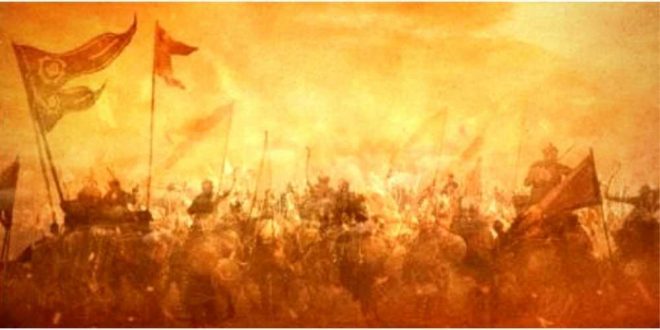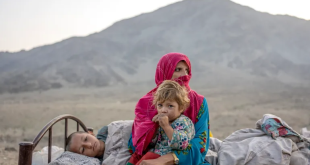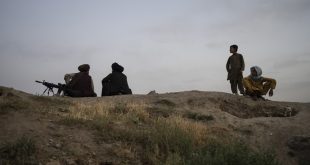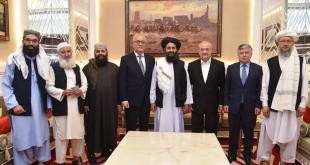Arwin Rahi
According to a 2015 Gallup poll, India was the most loved country in Afghanistan, where the former’s approval rating was at 62%.[1] Five years later, although India’s approval rating among Afghans is still high, there are indications that India’s popularity is declining. There are two main reasons for that: first, rising Islamophobia in India; second, vilification of Muslim historical figures by Bollywood.
Conquests and exchange of ideas before Islam
People from present-day Afghanistan and India have been interacting with each other for millennia. There had been periods of conquests and exchange of ideas between the two countries long before the appearance of Islam on the scene. Centuries before the Ghaznavids’ and Ghorids’ invasions of northern India, the Kushans and Hephthalites, who both were non-Muslim, had expanded their reign from Afghanistan into northern India.
Prior to the Kushans and Hephthalites, the Mauryan Empire had extended its reach—in the opposite direction—from its capital at Pataliputra, in present-day Bihar. It was under the Mauryan Empire that Buddhism, from India, was brought to Afghanistan, and via Afghanistan to China. More than a millennium later, Islam would be introduced into much of northern India from and through Afghanistan.
Because of their minority status and shared religious and cultural ties, Indian Muslims had maintained a strong relationship with Afghanistan until India’s independence. Over the last 42 years of conflict in Afghanistan, India has always sided with internationally recognized Afghan governments, which has significantly contributed to India’s popularity in Afghanistan.
Islamophobia is a threat to Indo-Afghan relations
Notwithstanding India’s popularity, Afghans are starting to become concerned about the rise of Islamophobia in India. Incidents of Muslims’ being lynched in India on mere suspicion of eating or carrying beef are condemned in Afghanistan. It’s hard for Afghans not to express their sentiments when their fellow Muslims are subjected to violence and extra-judicial killings.
In the aftermath of the violence against Muslims in Delhi in February 2020, Afghan protestors took to the streets in several cities such as Kabul, Herat, and Bamiyan in support of Indian Muslims. Protestors in Herat set the Indian flag ablaze. Perhaps it was the first time that the Indian flag was being burned in an anti-India protest in Afghanistan. Similarly, protestors in Bamiyan province set fire to, and stepped on, Prime Minister Narendra Modi’s posters.
While it’s true that Indian Muslims are India’s citizens, it’s also true that Indian Muslims share a common religion with the majority of Afghans. From Afghans’ perspective, being concerned about Indian Muslims is not an interference in India’s internal matters. The historical and religious connections between Afghans and Indian Muslims are too strong to ignore.
Moreover, India, too, shows concerns for Afghanistan’s Hindus and Sikhs, hence the Citizenship Amendment Act. No Afghan has ever objected to India’s interest in the affairs of Afghan Hindus and Sikhs. If Indian Sikhs and Hindus can be sympathetic toward Afghan Hindus and Sikhs, then Afghan Muslims too can be sympathetic toward Indian Muslims.
Bollywood’s vilification of Muslims harms Indo-Afghan relations
Afghans enjoy watching Bollywood movies. However, any attempt by Bollywood to rewrite history in black and white, pitching Hindus against Muslims, will complicate India’s relations with Afghanistan. For example, movies such as Padmaavat, Kesari, and Panipat, where Muslims are portrayed as a bunch of savage marauders, angered viewers in Afghanistan.
The movie Panipat, which depicts Ahmad Shah Durrani—who’s regarded as the father of modern Afghanistan—as a balding devilish figure, sparked outrage amongst Afghans from all walks of life. The movie even prompted the Afghan government to share its concerns with both the Indian government and the movie director.
Extremists depict the 1761 Third Battle of Panipat as a clash between Muslims and Hindus, which is untrue. First, in the Maratha camp, there was a Muslim contingent of ten thousand men, led by a Pashtun Muslim general named Ibrahim Khan Gardi, who also commanded the Marathas’ left wing against the Afghans. Second, the Rajput Hindu rulers of Jaipur and Marwar sought Ahmad Shah Durrani’s assistance against the Marathas,[2] who were encroaching on the Rajput territory. If it were up to Bollywood to judge the Rajputs, they’d be declared traitors.
Bollywood script writers and directors need to keep in mind that before the Westphalian concept of nation-state, whereby countries have demarcated borders, was imported from Europe, people in our region used to live under empires, kingdoms, and dynasties. Before the era of nation-states, borders were not fixed; they shifted depending on a ruler’s might. It is in this context alone that we can understand the earlier history of South Asia.
The way forward
Over the last 40 years of conflict in Afghanistan, a segment of the Afghan society has embraced religious extremism. Driven by fanaticism, these Afghans can exploit even minor events in India to derail Indo-Afghan relations. The general expectation in Afghanistan is that Indians won’t give these extremists the opportunity to derail Indo-Afghan relations.
As part of its foreign and security policy, India considers it a priority to have close relations with Afghanistan, where since 2001 India has invested billions of dollars. The investment, in addition to being helpful to Afghans, has paid India off. At present, Afghans love India more than any other foreign country. Because of India’s positive image, before the Covid-19 outbreak, every month thousands of Afghans used to travel to India for medical treatment and tourism.
Cordial Indo-Afghan relations are a win-win for both countries: Afghanistan needs India’s economic assistance, and India—as a rising power—needs Afghanistan’s location to project its soft power. Afghanistan’s vast untapped mineral resources can also saturate India’s growing demand for raw materials such as iron ore and lithium. However, Islamophobia and Bollywood’s negative depiction of Muslims can spoil both India’s reputation in Afghanistan as well as Indo-Afghan relations.
Arwin Rahi is a former adviser to the Parwan governor in Afghanistan. He has an M.A. in Politics and Security Studies from the OSCE Academy, and an M.A. in International Affairs from the Bush School of Government & Public Service. He’s written for Forbes, the National Interest, the Diplomat, BBC Persian, among others. He can be reached at [email protected].
[1] Raneen Dadfar Spanta, Afghanistan’s Politics: An Insider’s Account, Vol. II P. 595
[2] See chapter XVIII of Ganda Singh’s Ahmad Shah Durrani: Father of Modern Afghanistan.
 Afghanistan Times
Afghanistan Times




